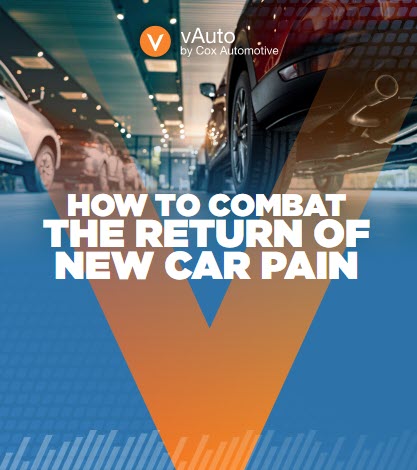Pop Quiz Answer: Packs Are The Root Cause Of The Used Vehicle Problem
It’s pretty cool to imagine dealers donning white lab coats and analyzing the inventory metrics I shared in my last Pop Quiz post.
Five dealers took the time to diagnose why Group 1, the dealership group with the undeniably poorer used vehicle metrics in the quiz, is suffering compared to Group 2.
With Market Days Supply, the dealers correctly noted that Group 1 appears to be stocking less-desirable vehicles. As one commenter noted, Group 2 is “paying more attention to market demand” as they stock their inventory.
With Cost to Market, the dealers also astutely spotted a striking disparity. “Group 1 for some reason acquires their vehicles on the high side,” a commenter notes. Another writes, “Group 1 pays more and stocks slower moving units.”
With Price to Market, all the dealers sensed Group 1’s problem—a pricing strategy that probably combines wishful thinking with too-little/too-late adjustments to bring their inventory in line to the market.
With Inventory Age and Inventory Turns, the commenters correctly correlated Group 1’s performance as reflective of other factors—less desirable inventory, improper pricing, a less-than-strict aging policy and suspected problems with descriptions, photos and related merchandising. One adds, “a higher (turn) number is the result of doing all of the above correctly.”
All in all, the dealers offered sound, Velocity-based diagnoses of Group 1’s performance. Their assessments are a gratifying testimony to their skills and smarts as Velocity students and retailers.
I’m absolutely certain that with a little more background and time, the dealers would have sniffed out the principal, root-cause reason for Group 1’s poor performance—a $1,000 pack applied to every used vehicle they retail.
The issue isn’t necessarily the presence of the pack, it’s the size of the pack that’s the problem.
In effect, the $1,000 pack sets off a chain of less-than-desirable decisions:
- Appraisers and buyers choose not to acquire more desirable, in-demand inventory because the cars, when saddled with a $1,000 pack, don’t offer the front-end gross profit the dealer expects. The end result: Higher Market Days Supply and Cost to Market metrics than Group 2, which charges a $250 pack/car.
- The $1,000 pack effectively forces Group 1 managers to initially (and subsequently) over-price their less-desirable vehicles, given their market appeal, to achieve the front-end gross profit the dealer expects.
- Group 1’s inventory age and annualized turn metrics are direct, symptomatic summaries of how the $1,000 pack slows the pace of sales and the overall performance and profitability of the used vehicle department.
I’ve long argued that today’s market is too efficient and too transparent for dealers to continue charging vehicles packs the way they have in the past. Packs, by definition, amount to a tax on every used vehicle. They do not add or enhance the value of the vehicle. They are a surcharge that costs dealers, like Group 1 in this quiz, a lot more than they think.
My sincere thanks to the dealers who took time to answer the quiz question.
Looking ahead, I have a hunch that packs will become a more frequent (and heated) topic of conversation as dealers struggle to understand how competitors, like Group 2, can pay more for used vehicles, price them higher, sell more cars and make more money.
The post Pop Quiz Answer: Packs Are The Root Cause Of The Used Vehicle Problem appeared first on Dale Pollak.








